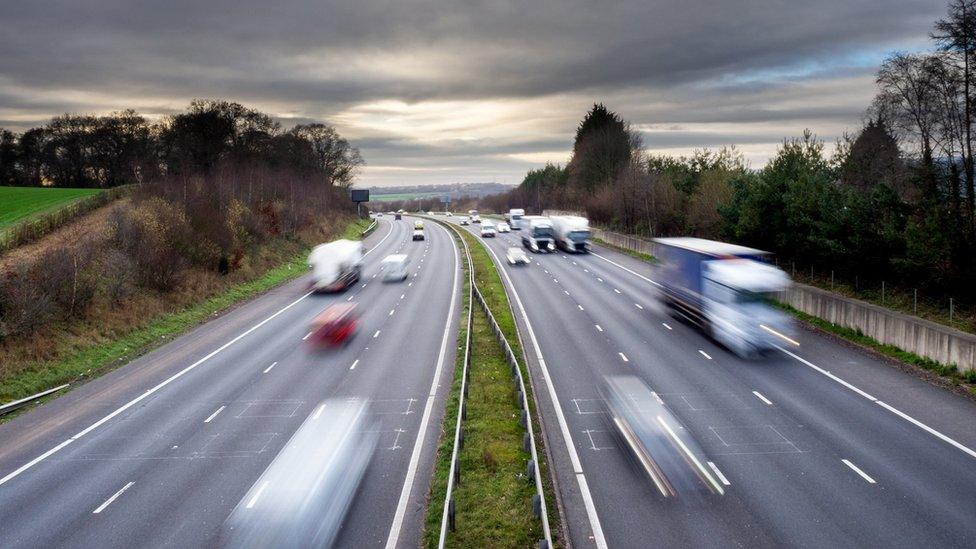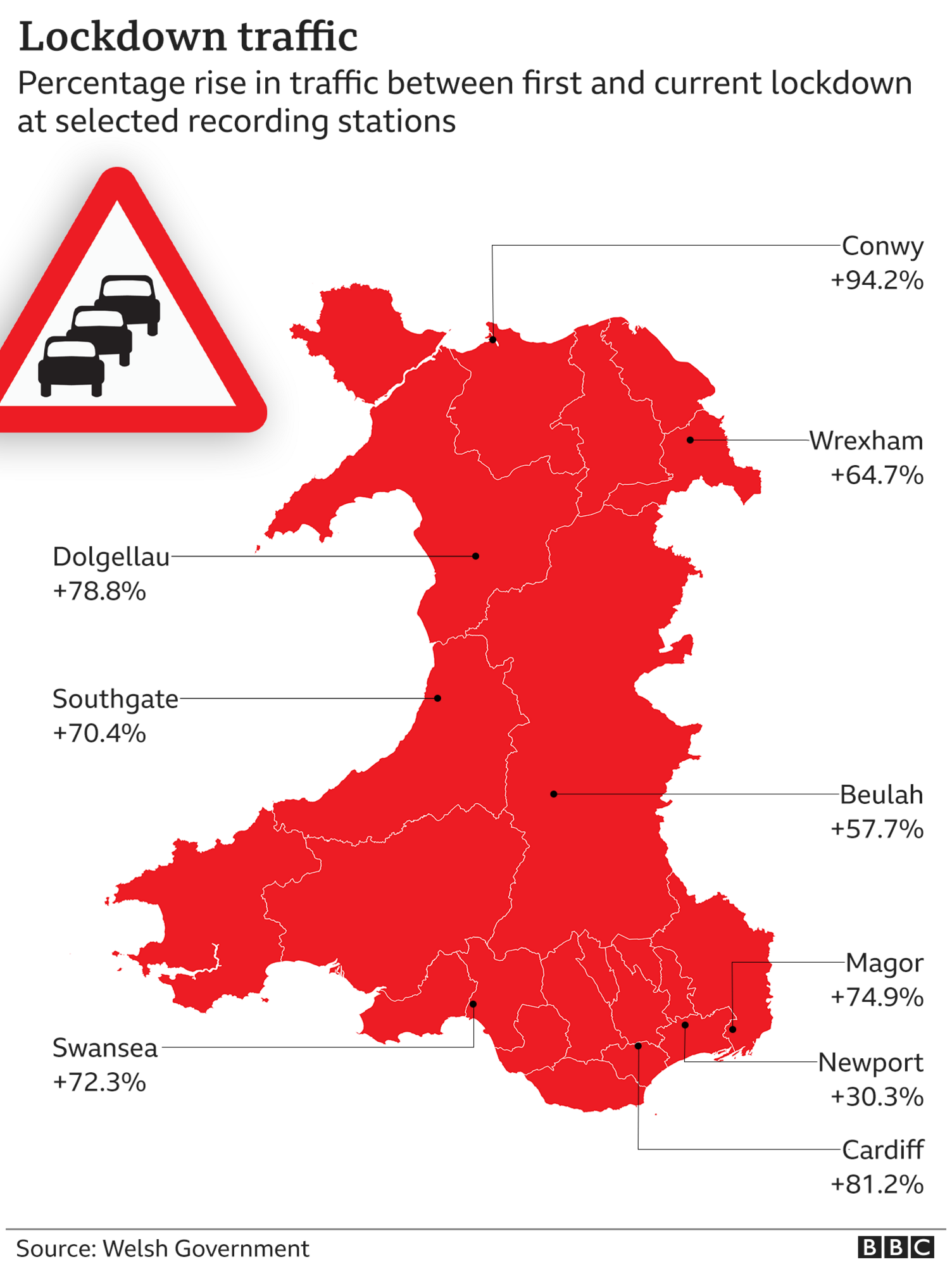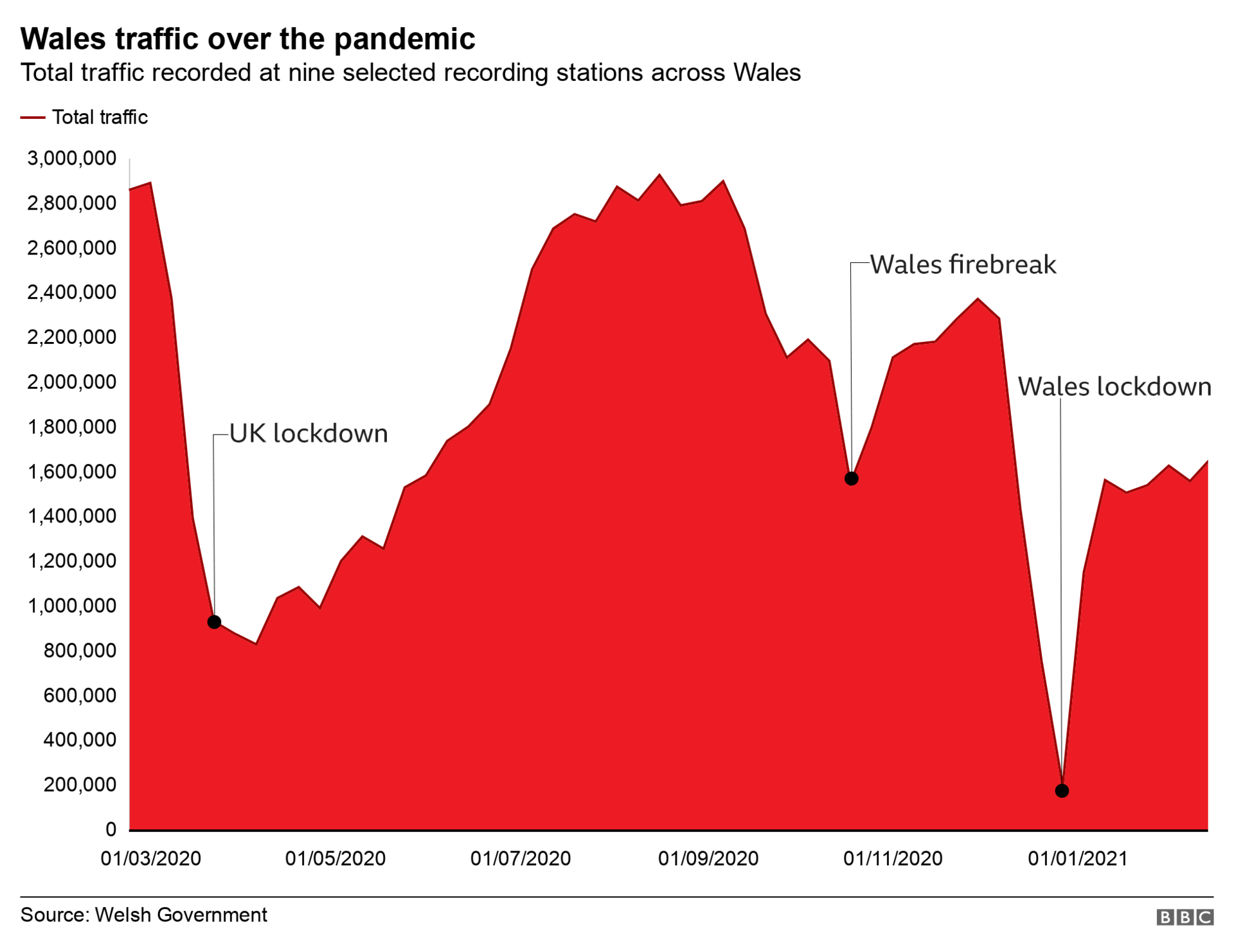Covid: Traffic on Welsh roads 60% higher than first lockdown
- Published
- comments

Cardiff has seen one of the highest increases in south Wales
All parts of Wales have seen a rise in road traffic in recent weeks, compared with the first national lockdown.
Some areas recorded almost double the amount of vehicles, Traffic Wales and Welsh Government figures reveal.
There has been a 62% rise in road use across Wales over the most recent six weeks compared with the first six full weeks of restrictions from March 2020.
This is despite almost identical restrictions, with people asked to avoid all non-essential travel.
Traffic data is recorded by the Welsh Government at specific points on roads, including main routes like the M4 and A55.
Figures for 2020 and up to 20 February 2021 have been obtained by BBC Wales and from them we can get an indication of the traffic picture throughout the country.


What do the figures show?
Newport saw the lowest increase in traffic in Wales, with just over 420,000 (30%) more vehicles recorded.
This goes against the trend in the rest of south Wales, with every other site recording a increase higher than 70%.
Newport: 30%
Swansea: 72%
Magor: 75%
Cardiff: 81%
Beulah, near Llanwrtyd Wells in Powys saw an increase of 58% - the lowest figure outside the M4.
Beulah: 58%
Wrexham: 64%
Southgate near Aberystwyth: 70%
Dolgellau, Gwynedd: 79%
Conwy: 94%
This recent increase follows an initial dip over the Christmas period, which saw the lowest traffic levels of 2020.
The traffic levels we are seeing now were not reached last year until the very end of June, 14 weeks after the first restrictions were put in place.


During summer the amount of road traffic recovered to levels seen before any restrictions were in place.
However each subsequent lockdown is seeming to have less of an effect on the numbers.
Prof Stuart Cole, emeritus professor of transport at the University of South Wales, said people were "overcoming the scare that was put about" during the first lockdown, but added that commuting was likely to fall because of homeworking.
"People just think 'well this is really efficient, I can talk to anybody just as efficiently'. So I think the new market's going to be leisure for the trains," he said.
'Helps motivation'
John Parkinson, head of psychology at Bangor University, said while he acknowledged the impact of "lockdown fatigue," he thought people's intentions to follow the rules remained "incredibly high."
"If you have an end-point it should help people, it helps planning, commitment, and it helps motivation.
But he said as vaccination rates rose, there could be a belief that "it must be safe now".
"So I imagine that could have a negative impact on compliance to rules."
Conwy has seen one of the largest traffic increases in Wales, with just under the double the amount of traffic recorded.
Data released by Google allows us to calculate changes in travel behaviour of communities over time, compared to a baseline figure taken in January-February 2020.
Using this data for Conwy, we can see that the number of people visiting parks and outdoor recreation areas has often reached levels higher than even before the pandemic.
The amount of people visiting supermarkets has stayed at around the same level.
However visits to retail and hospitality destinations in general have recently seen levels almost 80% lower than pre-lockdown numbers.
What about public transport?

Forecasts suggest public transport usage will take years to recover
One striking decrease in behaviour, seen throughout Wales, is the decrease in people using public transport, with many regions showing more than a 60% reduction, potentially leading to inflated road traffic.
Prof Cole said he thought messaging about avoiding public transport would have a lasting impact on passenger numbers.
"You believe [the government] when they say the scientists have said to stay at home, you must not travel on public transport, public transport is dangerous.
"That will be in people's minds for quite some time," he said.
He said reassuring people public transport is safe would take a lot of time, with the most optimistic forecasts showing figures returning to 80% of the pre-pandemic level over the next three years, and only then with no restrictions in place.

WINTER LOCKDOWN GETTING YOU DOWN? : 6 Top tips for looking after your mental health
TRY SOME NEW RELAXATION TECHNIQUES: What is mindfulness and how can you achieve it?

- Published13 January 2021

- Published20 June 2020

- Published21 May 2021
